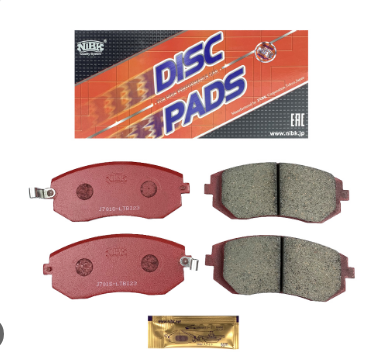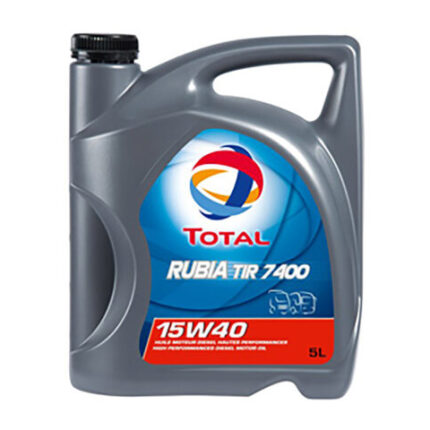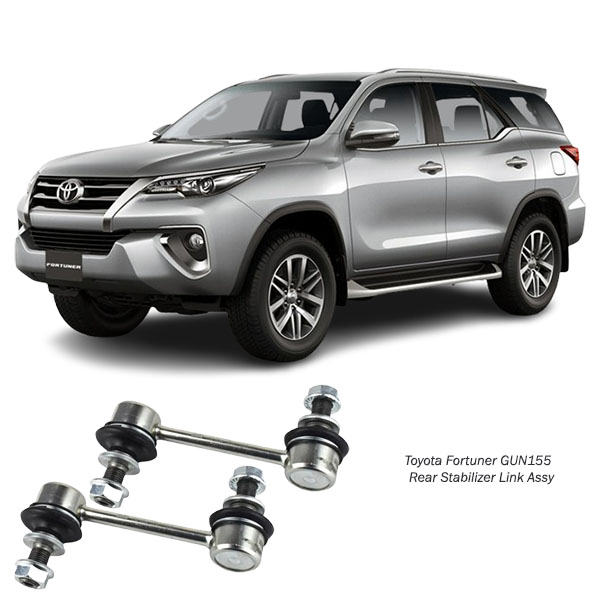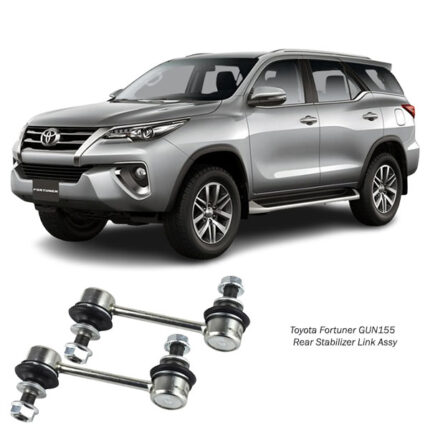Get Toyota Fortuner GUN155 Rear Stabilizer Link GUN155/156/165/166 48830-0K010 in Kenya
The rear stabilizer link, often referred to as a sway bar link, is a critical component in a vehicle’s suspension system. It connects the rear stabilizer bar (or sway bar) to the vehicle’s suspension, playing an essential role in maintaining stability, handling, and ride comfort. This comprehensive guide explores the functions, advantages, symptoms of wear, maintenance tips, and replacement process for rear stabilizer links.
What is a Rear Stabilizer Link?
The rear stabilizer link is a small but vital part of the suspension system. It connects the stabilizer bar (a metal rod running across the rear axle) to the suspension arms or struts. This linkage ensures the stabilizer bar functions effectively by transferring forces between the suspension components on either side of the vehicle.
Typically, a rear stabilizer link consists of:
- A Metal Rod: Serves as the structural connection.
- Bushings or Ball Joints: Absorb minor movements and allow flexibility.
- Fasteners: Secure the link to the stabilizer bar and suspension.
Functions of the Rear Stabilizer Link
- Reduces Body Roll
- During cornering, the rear stabilizer link helps counteract body roll by distributing weight between the wheels on either side.
- This ensures the car remains level, improving handling and safety.
- Enhances Stability
- By linking the stabilizer bar to the suspension, the stabilizer link minimizes lateral movement and enhances vehicle stability, especially during sharp turns.
- Improves Ride Comfort
- The link reduces vibrations and shocks transferred from the road, providing a smoother ride for passengers.
- Balances Suspension Dynamics
- It helps synchronize the movements of the suspension components, ensuring consistent handling and predictable vehicle behavior.
- Prevents Oversteer and Understeer
- By maintaining proper wheel alignment and reducing roll, the stabilizer link mitigates oversteer (rear-end sliding) and understeer (front-end sliding).
Benefits of a Rear Stabilizer Link
- Improved Handling
- A functional stabilizer link ensures precise steering response and better control during cornering.
- Enhanced Safety
- By reducing body roll and maintaining stability, the stabilizer link prevents accidents caused by loss of control.
- Longer Tire Life
- Proper suspension dynamics minimize uneven tire wear, extending the lifespan of tires.
- Reduced Stress on Suspension Components
- A stabilizer link absorbs some of the stresses placed on the suspension, preventing premature wear of other parts like shocks and struts.
- Better Performance
- For performance vehicles, a robust rear stabilizer link enhances agility and responsiveness.
Types of Rear Stabilizer Links
- Standard Stabilizer Links
- Common in most vehicles, featuring a simple rod and bushing design.
- Cost-effective and durable for everyday use.
- Heavy-Duty Links
- Built for larger vehicles or those used in rugged conditions.
- Made from thicker materials with reinforced bushings.
- Adjustable Links
- Allow fine-tuning of the stabilizer bar’s effectiveness, ideal for performance vehicles or those with modified suspensions.
- Ball Joint Stabilizer Links
- Use ball joints instead of bushings for smoother movement and greater durability.
Signs of a Failing Rear Stabilizer Link
Like any suspension component, rear stabilizer links are subject to wear and tear. Common symptoms of failure include:
- Clunking or Rattling Noise
- A loose or worn stabilizer link often produces noises when driving over bumps or uneven terrain.
- Excessive Body Roll
- If the vehicle leans excessively during cornering, the stabilizer link may be failing.
- Poor Handling
- Difficulty maintaining control, especially during turns or lane changes.
- Uneven Tire Wear
- Faulty stabilizer links can lead to improper suspension dynamics, causing irregular tire wear.
- Loose or Disconnected Link
- Visual inspection may reveal a broken or detached stabilizer link.
Causes of Rear Stabilizer Link Failure
- Age and Wear
- Over time, bushings and joints deteriorate due to constant stress and environmental exposure.
- Driving Conditions
- Rough terrain, potholes, and harsh driving habits accelerate wear and damage.
- Corrosion
- Exposure to water, salt, and debris can corrode the metal components, compromising strength.
- Overloading the Vehicle
- Carrying excessive weight increases stress on the suspension, hastening link failure.
- Manufacturing Defects
- Poor-quality materials or improper design can lead to premature failure.
Maintenance Tips for Rear Stabilizer Links
- Routine Inspections
- Check stabilizer links during regular vehicle servicing, especially if unusual noises or handling issues arise.
- Lubrication
- For links with ball joints, periodic lubrication reduces friction and extends lifespan.
- Protect Against Corrosion
- Wash the undercarriage regularly, especially in regions with salt-treated roads, to prevent rust.
- Replace Worn Bushings
- If bushings show signs of wear, replace them promptly to avoid further damage.
- Drive Cautiously
- Avoid sudden impacts from potholes and minimize heavy loads to reduce stress on the suspension.
Replacing a Rear Stabilizer Link
Replacing a rear stabilizer link is a relatively straightforward process for a skilled DIYer or a professional mechanic. Here’s an overview:
Tools Needed
- Wrenches and sockets
- Jack and jack stands
- Penetrating oil (for rusted bolts)
- Torque wrench
Step-by-Step Process
- Preparation
- Park the vehicle on a flat surface and engage the parking brake.
- Loosen the lug nuts of the rear wheels (if necessary).
- Lift the Vehicle
- Use a jack to raise the rear of the vehicle and secure it with jack stands.
- Locate the Stabilizer Link
- Identify the rear stabilizer link connecting the sway bar to the suspension arm or strut.
- Remove the Old Link
- Apply penetrating oil to rusted bolts.
- Use a wrench or socket to remove the fasteners securing the link.
- Install the New Link
- Position the new stabilizer link and secure it with bolts, tightening them to the manufacturer’s torque specifications.
- Test the Suspension
- Lower the vehicle and test drive to ensure the suspension operates quietly and smoothly.
Conclusion
The rear stabilizer link is indispensable for maintaining vehicle stability, handling, and ride comfort. Regular inspections, proper maintenance, and timely replacements ensure it functions optimally, providing a safer and more enjoyable driving experience. Whether you’re driving a compact sedan or a rugged SUV, understanding the role and care of rear stabilizer links enhances both performance and longevity.
Follow us on Facebook for more parts.




